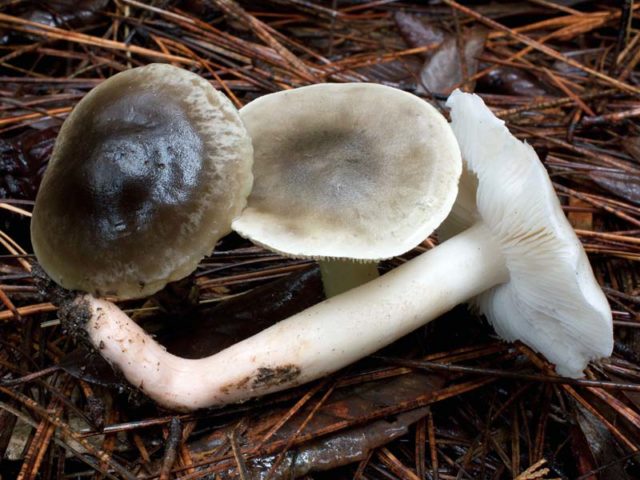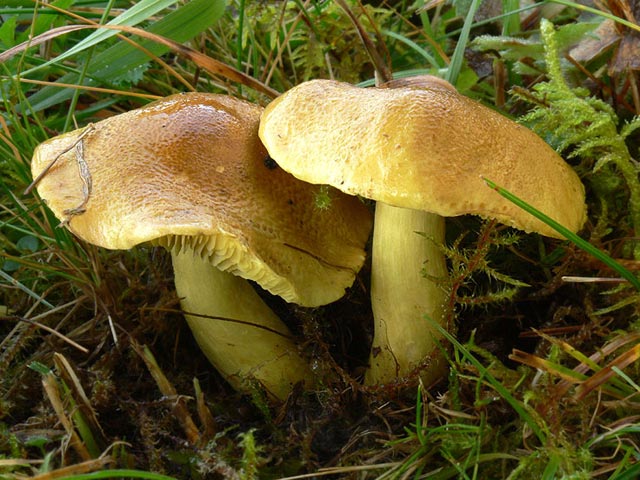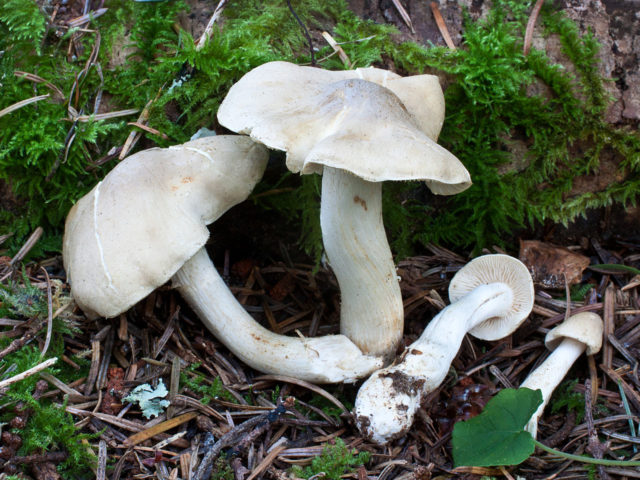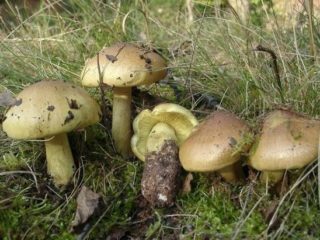Content
Due to its characteristics, soap mushroom (Gyrophila saponacea, Tricholoma moserianum) is classified as a conditionally edible mushroom, so it can be cooked. To do this you need to know some secrets.
Where do soap rows grow?
Soap row belongs to the Ryadovkov family. Representatives grow in small groups that create rows, which is how the genus got its name. A special feature of the representatives is their characteristic soapy smell, which is not easy to get rid of.
Fruiting bodies are distributed everywhere, they are often found in meadows, deciduous and coniferous forests.Any soil is suitable for them; mushrooms bear fruit every year.
Distribution area: temperate northern zone. They can be seen in Karelia, Altai, Leningrad and Tver regions. They are also found in Ukraine, North America and Western Europe.
What soap rows look like
The cap is convex at a young age and later becomes prostrate. Its edges are uneven and cracked. The surface of the mushroom is covered with small scales and becomes oily in humid weather. After the fruiting body dries, the cap is rough. The mushroom is only 4-6 cm in diameter, but there are specimens that reach impressive sizes. Their caps grow up to 12 cm.
On its reverse side you can see rare plates that grow tightly to the leg. They are colored white, cream or gray-green. In adult representatives, the plates are light green; when pressure is applied to them, pink juice is released. White fungus spores.
The leg is thick - about 3 cm in diameter. Its length at a young age is up to 4-5 cm. Large adult specimens rest on high legs, sometimes reaching 12 cm. They are cylindrical in shape, smooth, less often covered with scales. Painted off-white or gray. The bottom becomes rusty.
The pulp is very dense. It has a pink tint on the cut and fracture. A distinctive feature is its smell. Fresh mushroom smells like laundry soap; the smell intensifies during cooking. The taste of the pulp is bitter.
In the description of the soap row and from the photo it is clear that the color of the fruit is uneven and there are spots. The center is darker, and the edges of the cap are somewhat lighter. There are mushrooms of gray-green, brown-yellow, olive or gray-yellow. Sometimes the color has a pinkish-brown tint.
Is it possible to eat soap rows?
Soap row is not a poisonous mushroom. However, it is rarely eaten. This is due to the smell of the fruit, which intensifies during cooking. Some mushroom pickers salt them with garlic and horseradish to remove extraneous flavors.
There is an opinion that in large quantities such a forest product can cause poisoning and upset the intestinal tract. Therefore, some people consider these fruiting bodies to be toxic.
Taste qualities of the soap row mushroom
Soap row does not have a special taste. Its flesh is bitter and smells unpleasant.
Benefits and harm to the body
Interestingly, soapweed (or Tricholoma Saponaceum) still benefits the body. It is used in folk medicine. The fruit body contains many useful substances:
- B vitamins;
- polysaccharides.
They increase the body's resistance to various pathogens, prevent the appearance of tumors and reduce their growth rate.
False doubles
Soap row has similarities with other representatives, not all of which are edible. Outwardly it resembles:
- greenfinch;
- gray row;
- brown;
- golden;
- brindle;
- pointed;
- smelly.
However, knowing the description of these species, it is possible to recognize the soap row. It differs from the greenfinch in its plates. They are much lighter. Its smell is reminiscent of a cucumber, it has dense flesh and a short stalk that is almost completely immersed in the ground. Refers to conditionally edible.
U gray row pleasant smell of flour. It grows on a short stalk and has white flesh. Belongs to the edible variety.
Brown row It is distinguished by the brown color of the cap and characteristically turned up edges.It grows mainly in birch groves and has a bright mushroom smell. Refers to conditionally edible.
Golden row releases juice when pressed. Its leg is covered with red scales, and the flesh is characteristic white. It is inedible and poisonous.
Tiger row - a poisonous representative with characteristic black spots and scales on the cap. The smell is unpleasant, but strong.
Pointedand I row has a convex bell-shaped cap. It is dark gray or black with jagged edges. The taste of the fruiting body is bitter and unpleasant. Is poisonous.
The row is smelly It has an unpleasant odor that appears after the fruit has been destroyed. Her hat is dense and has a tubercle in the center. The skin and flesh are white. Refers to hallucinogenic mushrooms.
Collection rules
When collecting fruits, you need to adhere to a number of rules:
- choose only familiar mushrooms;
- give preference to young fruits;
- do not take damaged copies;
- clean the earth and dirt immediately, without leaving it for later.
Wicker baskets are used to collect mushrooms. You cannot use plastic buckets and bags where the fruiting bodies do not breathe and quickly deteriorate.
How to prepare soap rows
The taste of soap bark depends on proper preparation. The fruiting bodies are pre-cleaned, washed under running water and soaked for several hours. After this, they need to be boiled in water, after adding vinegar to it for 10 minutes. after boiling. Drain the broth and repeat the procedure again. Increase cooking time to 20 minutes. In 10 min. Before the end of cooking, you need to put the peeled onion in the pan.It will help get rid of the unpleasant odor. Rinse the finished product in cold water.
After cooking, the product can already be eaten, but it is best to salt it. To do this, prepared mushrooms are placed in sterile jars, at the bottom of which horseradish, currant leaves and several cloves of garlic are placed. Cover the mushrooms with salt, shake the jar and put it in a cool place. After 45 days you can eat.
Conclusion
Soap mushroom is a completely edible mushroom, however, you need to be careful when collecting. It is very easy to confuse it with poisonous or unsuitable specimens for food.
















